Indication
This formula, which was recorded in the ‘Formulary of the Tai Ping Welfare Dispensary Bureau’ (tai ping hui min he ji ju fang), 1151 CE, is based on a combination of Si Jun Zi Tang (Four Major Herbs Formula) and Si Wu Tang (Dang Gui Four Combination), together with two additional herbs that serve to augment the actions of tonifying the Qi and nourishing the Blood: Astragalus (huang qi) and Cinnamon (rou gui). This makes the formula more potent than Ba Zhen Wan (Ginseng and Dang-gui Eight Combination), which was not formally recorded until some four centuries later.
There is a certain degree of confusion over whether or not this formula is specifically warming and Yang tonifying, which would restrict its use to deficiency Cold conditions. However, this is not necessarily so.
Both of these two additional herbs do, if fact, have Yang properties: Astragalus root (huang qi), with a slightly warm nature, tonifies the Qi and raises the Yang Qi of the middle Jiao; while Cinnamon bark (rou gui), an Interior warming herb with a hot nature, warm-tonifies the Spleen Yang and the Kidney Yang, dispels Cold and promotes the circulation of the Qi and Blood.
However, the latter is only used in a relatively small dose as a catalyst for Qi and Blood production; while the mild nature of the former does not give the formula an Interior Cold dispelling action – on the contrary, this herb is often used in formulas for fever due to Qi deficiency; thus, it too serves to enhance both the Qi tonifying and Blood nourishing actions of the formula.
Thus, in terms of clinical efficacy, the addition of the two herbs mentioned above makes this formula a stronger and more rapidly acting tonic for the Qi and Blood than the related formula, Ba Zhen Wan.
The synergistic actions of the herbs are as follows:
Astragalus root (huang qi), Codonopsis root (dang shen), Atractylodes rhiz. (bai zu), Poria cocos (fu ling), Glycyrrhiza root (zhi gan cao): tonify the (Spleen) Qi.
Paeonia root (bai shao), Rehmannia root (shu di huang), Angelica root (dang-gui), Ligusticum root (chuan xiong): nourish the (Liver) Blood.
Atractylodes rhiz. (bai zu), Poria cocos (fu ling): dispel Damp.
Angelica root (dang-gui), Ligusticum root (chuan xiong): activate the Blood and dispel stasis.
Cinnamomum bark (rou gui): warm-tonifies the Spleen and Kidney, promotes the circulation of the Qi and Blood (to promote Qi and Blood production).
Indications:
General debility
Side-effects of chemotherapy and radiotherapy (e.g. mouth ulcers, leukopenia)
Anaemia
Erectile dysfunction
Menstrual disorders (e.g. irregular menstruation, dysmenorrhoea)
Post-operative hypoalbuminaemia and anaemia
Chronic gastritis
Malnutrition
Chronic non-healing ulcers
Post-partum debility
Thrombangiitis obliterans
Signs & Symptoms:
Fatigue, muscular weakness
Poor appetite
Exertional dyspnoea (shortness of breath on mild exertion)
Weak, low voice, reluctance to speak
Palpitations
Pale or sallow complexion
Postural dizziness
Dry, lustreless skin and hair
Cold extremities
Paraesthesia or numbness of the extremities
Sweating on mild exertion
Dark rings under the eyes
Chronic sores or chronic ulcers
Pale tongue with a thin white coat
Thready and weak pulse
Combinations:
Chronic fatigue syndrome:
BA JI YIN YANG WAN
BU ZHONG YI QI WAN
YU PING FENG SAN
SHEN QI DA BU WAN
ZHUANG YANG YI JING WAN
QI BAO MEI RAN DAN (Jia Wei)
TAO HONG SI WU WAN
ENERGY TONIC Formula
Poor digestion:
BAO HE WAN
XIANG SHA LIU JUN ZI WAN
DIGEST-AID Formula
Poor sleep:
AN SHEN DING ZHI WAN
TCM Syndromes: Qi-Blood dual deficiency.
TCM Actions: Tonifies the Qi and nourishes the Blood, warms the Yang.
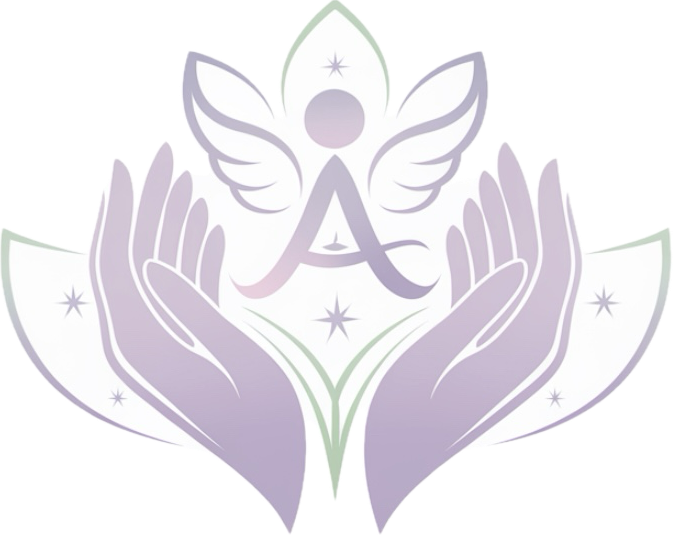
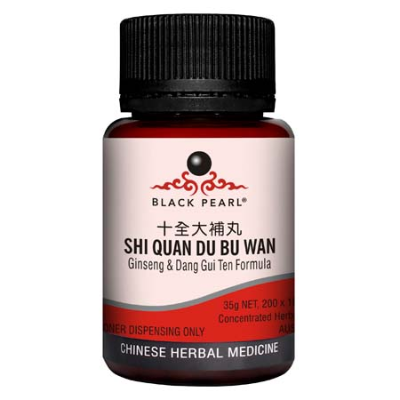
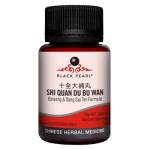
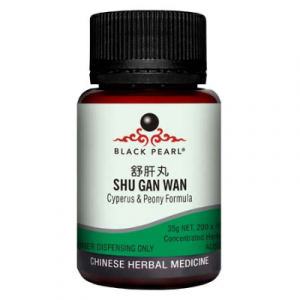


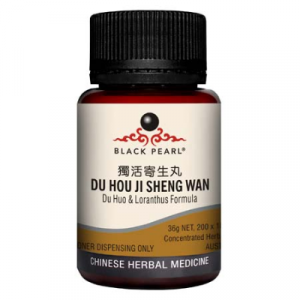


Reviews
There are no reviews yet.